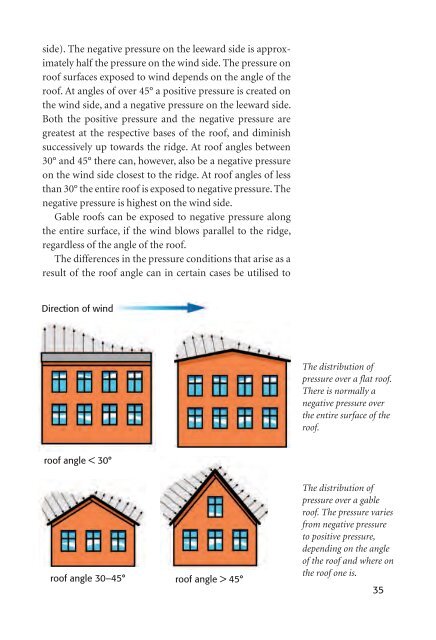Fire ventilation
Fire ventilation
Fire ventilation
Create successful ePaper yourself
Turn your PDF publications into a flip-book with our unique Google optimized e-Paper software.
side). The negative pressure on the leeward side is approximately<br />
half the pressure on the wind side. The pressure on<br />
roof surfaces exposed to wind depends on the angle of the<br />
roof. At angles of over 45° a positive pressure is created on<br />
the wind side, and a negative pressure on the leeward side.<br />
Both the positive pressure and the negative pressure are<br />
greatest at the respective bases of the roof, and diminish<br />
successively up towards the ridge. At roof angles between<br />
30° and 45° there can, however, also be a negative pressure<br />
on the wind side closest to the ridge. At roof angles of less<br />
than 30° the entire roof is exposed to negative pressure. The<br />
negative pressure is highest on the wind side.<br />
Gable roofs can be exposed to negative pressure along<br />
the entire surface, if the wind blows parallel to the ridge,<br />
regardless of the angle of the roof.<br />
The differences in the pressure conditions that arise as a<br />
result of the roof angle can in certain cases be utilised to<br />
Direction of wind<br />
roof angle < 30°<br />
roof angle 30–45°<br />
roof angle > 45°<br />
The distribution of<br />
pressure over a fl at roof.<br />
There is normally a<br />
negative pressure over<br />
the entire surface of the<br />
roof.<br />
The distribution of<br />
pressure over a gable<br />
roof. The pressure varies<br />
from negative pressure<br />
to positive pressure,<br />
depending on the angle<br />
of the roof and where on<br />
the roof one is.<br />
35

















